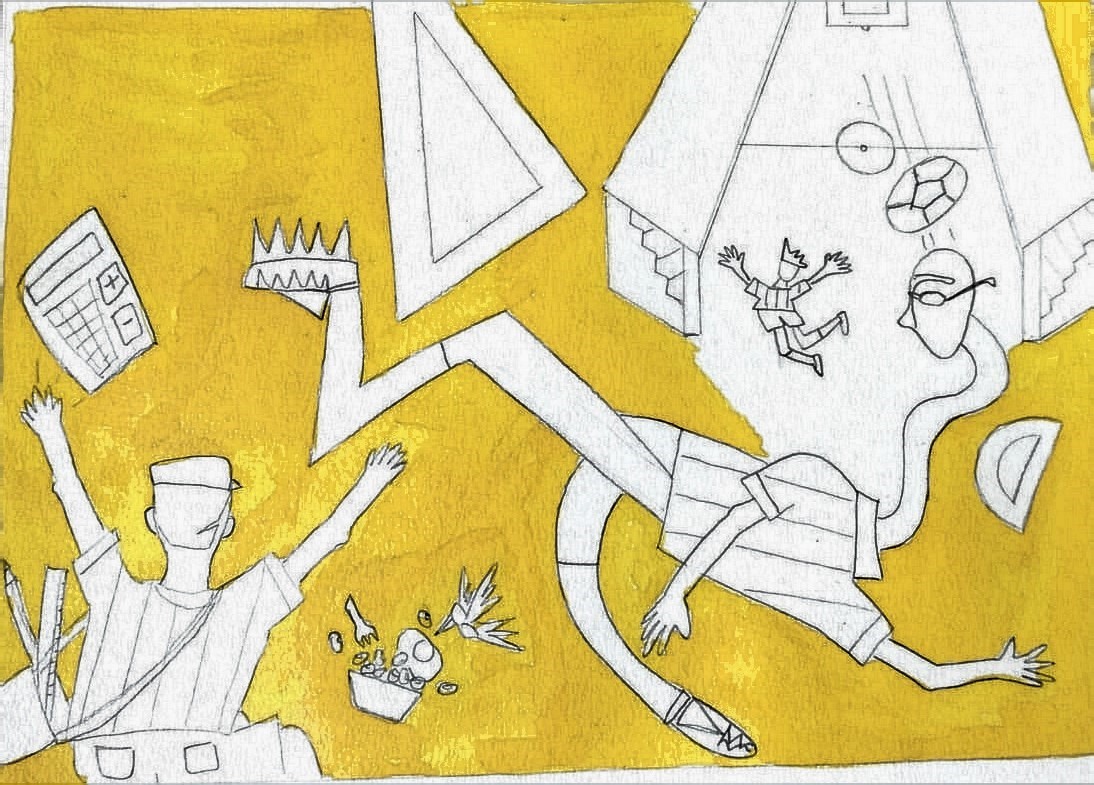Evaluation of the influence of socioeconomic variables on the running practice in Argentina
Main Article Content
Abstract
The aim of this study is to analyze the relationship among socioeconomic variables (age, gender, income, occupation and sport habits) with the running practice in Argentina. A quantitative approach was adopted, based on the National Survey of Risk Factors (ENFR) 2009. We established categories based on their relationship with the running social world and we analyzed the relationship among different socioeconomic variables with our research categories. Logistic regressions and multiple correspondence analysis we used along this work. Our analyses show that individual, social and economic characteristics have a relevant effect on running participation. In general terms, runners tend to be males, middle aged, with middle high income and higher education.
Downloads
Article Details

This work is licensed under a Creative Commons Attribution 4.0 International License.
Autores que publicam nesta revista concordam com os seguintes termos:
1. Autores mantém os direitos autorais e concedem à revista o direito de primeira publicação, com o trabalho simultaneamente licenciado sob a Licença Creative Commons Attribution que permite o compartilhamento do trabalho com reconhecimento da autoria e publicação inicial nesta revista.
2. Autores têm autorização para assumir contratos adicionais separadamente, para distribuição não-exclusiva da versão do trabalho publicada nesta revista (ex.: publicar em repositório institucional ou como capítulo de livro), com reconhecimento de autoria e publicação inicial nesta revista.
3. Autores têm permissão e são estimulados a publicar e distribuir seu trabalho online (ex.: em repositórios institucionais ou na sua página pessoal) a qualquer ponto antes ou durante o processo editorial, já que isso pode gerar alterações produtivas, bem como aumentar o impacto e a citação do trabalho publicado (veja O Efeito Acesso Livre).
References
ACCIARESI, Pablo. “Ya se me había hecho un hobby, una droga”: Goce, dolor e identificación en un grupo platense de corredores. Tesis de grado. Universidad Nacional de La Plata. FaHCE, 2014.
BOURDIEU, Pierre.La distinción. Criterios y bases sociales del gusto. Madrid: Taurus, 1998.
DOWNWARD, Paul. Exploring the economic choice to participate in sport: Results from the 2002 General Household Survey. International review of applied economics, v. 21 n. 5, p. 633-53, 2007.
EREN, Colleen. Estranged Labor, Habitus, and Verstehen in the Rise of Extreme Endurance Sports. Journal of Sport and Social Issues, v. 41 n. 5, p. 1-18, 2017.
GARCÍA, Jaume; LERA-LÓPEZ, Fernando; y SUÁREZ, María José. Estimation of a structural model of the determinants of the time spent on physical activity and sport: Evidence for Spain. Journal of Sports Economics, v. 12, n. 5, p. 515-37, 2011.
GARTON, Gabriela; e HIJÓS, Nemesia. “La deportista moderna”: género, clase y consumo en el fútbol, running, y jockey argentinos. Antípoda, revista de Antropología y Arqueología, v. 30, p. 23-42, 2018.
GIL, Gastón. Correr y competir. Rituales de interacción y estilo de vida en el running. Revista del Museo de Antropología, v. 12, n. 1, p. 105-16, 2019.
GLASSER, William. Promoting client strength through positive addiction. Canadian Journal of Counselling and Psychotherapy, v. 11, n. 4, 1977.
GÓMEZ ROJAS, Gabriela; GRINSZPUN, Marcela; y SEID, Gonzalo. Clases de deporte y deportes de clase: La distribución de los gustos y prácticas deportivas en el espacio social. En VII Jornadas de Sociología de la UNLP: “Argentina en el escenario latinoamericano actual: Debates desde las ciencias sociales”. Universidad Nacional de La Plata. Facultad de Humanidades y Ciencias de la Educación. Departamento de Sociología, 2012.
HIJÓS, Nemesia. La historia del running en Argentina. Materiales para la Historia del Deporte, v. 17, p. 122-35, 2018.
HIJÓS, Nemesia. “¿Todos podemos ser corredores?”: Un análisis sobre la comunidad runner y su vínculo con el mercado. Arquivos em movimento, v. 14, p. 22-38, 2018.
KORONIOS, Konstantinos; MAVROMATI, Marina; KRIEMADIS, Athanasios; LEIVADITI, Eleni; KOLOVOS, Petros; y PAPADOPOULOS, Andreas. Sport participation and ageing: Evidence from marathon events. In: GeNeDis. Springer, Cham, 2017, p. 129-39.
MATTSON, Mark. Evolutionary aspects of human exercise—born to run purposefully. Ageing research reviews, v. 11 n. 3, p. 347-52, 2012.
PENG, Chao-Ying; SO, Tak-Shing. Logistic regression analysis and reporting: A primer. Understanding Statistics: Statistical Issues in Psychology, Education, and the Social Sciences, v. 1, n. 1, p. 31-70, 2002.
SCHEERDER, Jeroen; BREEDVELD, Koen; y BORGERS, Julie. Eds.. Running across Europe: the rise and size of one of the largest sport markets. Palgrave Macmillan, London, 2015.
SHIPWAY, Richard; HOLLOWAY, Immy; y JONES Ian. “Organizations, practices, actors, and events: Exploring inside the distance running social world”, International Review for the Sociology of Sport, v. 48 n. 3, p. 259-76, 2013.
SMITH, Stuart. Athletes, runners, and joggers: participant-group dynamics in a sport of “individuals”. Sociology of Sport Journal, v. 15 n. 2, p. 174-92, 1998
WACQUANT, Loïc. Un arma sagrada. Los boxeadores profesionales: capital corporal y trabajo corporal. En: J. AUYERO. Caja de herramientas – El lugar de la cultura en la sociología norteamericana. Buenos Aires: Unqui, 1999, p. 237-92.
